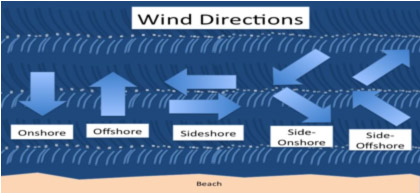
 |
|
#1
|
||||
|
||||
|
Starting Out Kitesurfing In South Florida – November 5, 2014
- Kiting Access is very important. Poor kiting behavior, intended or accidental can have the same effect, heavily restricting or closing our riding areas. Accidents, incidents, complaints can all fuel threats to access. We need to work effectively to to preserve access, anticipate problems and work to avoid them. Too many areas have been lost. - Find the best professional quality instruction that you can. All instruction is far from equal. Pick good conditions for instruction, i.e. useable wind to avoid wasting time and money and find out if there is a weather policy. More at http://fksa.org/forumdisplay.php?f=45 - After adequate instruction, duration will vary with the individual and conditions, work on skill development. Try to kite with someone more experienced than yourself, be prepared to help and keep tabs on each other. More at http://fksa.org/showthread.php?t=105 - Work to master board and kite handling skills, start small and work up in good conditions. Working in too little wind (or too much) can make things way too frustrating. Waves will slow down your progression, try to kite in flat water spots early on if possible. DO NOT kite onshore winds early on or offshore winds. - ALWAYS do proper weather planning and monitoring for sessions. Avoid storm and thunderstorm clouds with a passion. More at http://fksa.org/forumdisplay.php?f=29  - Try to go out in conditions with side to side onshore wind, 12 kts. to 18 kts. max with minimal gusts and waves ideally under 2 ft. until you are experienced and comfortable with conditions.  - Practice in areas far away from people and hard objects, power lines, trees, buildings, etc.. The less control you have with a kite, the greater downwind buffer you need between yourself, bystanders and hard objects. This could be a couple of line lengths or more. Work to maintain a safe downwind buffer at all times from bystanders and hard objects. Don’t go to a spot just because there are a bunch of kiters there unless it is suitable for your skill level. This has caused access problems. - DO NOT fly full sized kites on land for an extended period, that is what small trainer kites are for (2 – 3.5 m^2). Full sized kites are for the water alone, if you are ready. Make sure your kite size is appropriate for actual conditions. See what other people are flying close to your weight and see how they are doing with it. Never launch too large a kite refer to the manufacture’s wind speed table. Go for a kite size in the lower to mid-wind range. No session is worth your good health or the rest of your life. - Wear reasonable safety gear, the FWC now requires a PFD (be sure to use one that works for kiting) and whistle. Also wearing a good helmet for the demands of kiting and carrying a hook knife make sense too. - Always carefully preflight your gear checking for proper line attachment and length, lack of tangles and snags, breaks or things needing repair. Lines with knots should be replaced if the knot can’t be readily removed. Worn pigtails, leaders, bridles should be replaced. Don’t fly a kite with bladder leaks, repair it first. More at http://www.fksa.org/showthread.php?t=5871 - Make sure you are comfortable and well practiced at emergency depowering (killing as much kite power as you can) with any kite you may be flying with no hesitation. KNOW how to emergency depower and practice it regularly. Some assume they will be able to figure out how in the seconds of an emergency?! It almost never happens. - Make sure you are comfortable and well practiced with a couple of approaches to self-rescue. This is just a light overview of some of the things you should know and practice for safer kitesurfing. There is still a great deal more to learn and understand. Take your time and CAREFULLY accumulate experience under favorable conditions. If in doubt about conditions, sit it out. Rushing into excessive conditions or unfamiliar circumstances have led to problems in the past. Why repeat readily avoidable mistakes? Kiteboarding is all about fun, have a care and have at it! Still more information in the top stickies at: http://fksa.org/forumdisplay.php?f=45 .
__________________
FKA, Inc. transcribed by: Rick Iossi |
 |
|
|